(201 products available)




































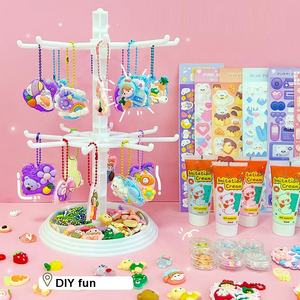
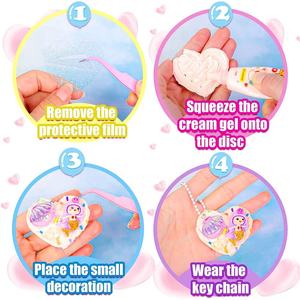
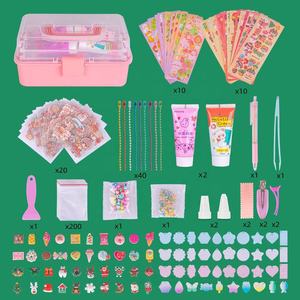
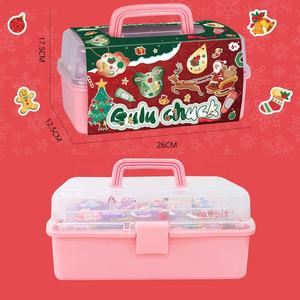








































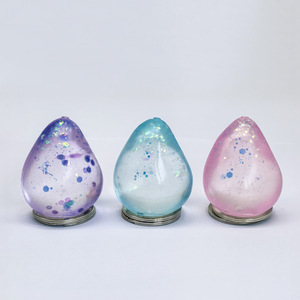



















































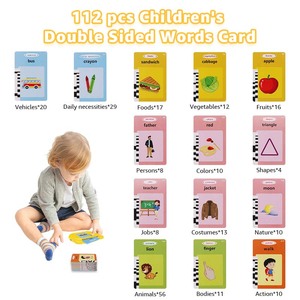



































































Toy goo comes in different types that serve various purposes. They include:
Slime
Slime is a popular toy goo that kids use to play. It has a stretchy and gooey texture that children find fascinating. Slime comes in different colors and can have various add-ins like glitter, foam beads, or scents. Kids enjoy stretching, squishing, and kneading slime. Some even make their own at home using glue and other ingredients.
Putty
Putty is another type of toy goo similar to slime but thicker and less sticky. It is also very malleable. However, putty is more pliable than slime. Like slime, putty comes in different colors and may have fun features like glow-in-the-dark or magnetic properties. Kids can mold, shape, and create different forms using putty.
Goo
Goo is a general term for any sticky and messy substance that kids can play with. Toy goo can refer to any type of gooey material, whether slime, putty, or something else entirely. The key feature of toy goo is its fun, hands-on texture that kids love to explore.
Therapeutic putty
Therapeutic putty is a type of toy goo used for more than just play. It helps people with hand strength, dexterity, and coordination exercises. Therapeutic putty is non-toxic and comes in different resistance levels. Users can stretch, shape, and squeeze the putty to improve their fine motor skills. It is useful for people with injuries, disabilities, or who want to strengthen their hands.
Glitter goo
Glitter goo is a type of slime or putty infused with lots of glitter. The sparkly particles add a fun visual appeal that makes the goo even more exciting to touch and play with. Glitter goo can come in any color, but the glitter gives it a shimmery effect. Kids who love all things sparkly will enjoy playing with glitter-filled slime or putty.
Safety:
Check if the toy goo is non-toxic and safe, especially for young kids. Look for products that carry safety certifications or have been tested for harmful substances. This ensures that even if a child accidentally ingests some of the goo, it won't harm them. Safety should always come first when choosing products for children.
Texture and Consistency:
Consider the texture and consistency of the toy goo. Whether a child prefers something smooth, squishy, or tacky, the texture can affect how much they enjoy playing with it. A consistent, reliable texture will make for better, more enjoyable play experiences that last longer without losing their enjoyable feel.
Ease of Cleanup:
Choose a toy goo that is easy to clean up and doesn't stain surfaces or fabrics. This will save parents a lot of stress and keep their homes looking neat. Goo that can be easily wiped away or vacuumed up is ideal for keeping both children's play areas and the rest of the house clean with minimal effort.
Educational Potential:
Some toy goos can be educational, helping kids learn or develop skills as they play. Choosing one with shapes, colors, or patterns that can be used for teaching purposes means playtime could also be used for learning. This will ensure that children benefit from an educational experience that is both enjoyable and enriching.
Longevity:
Consider how long the toy goo will last. Products that come in large quantities or are packed together in sets so that they can be used for different activities at once will provide more extended periods of fun and entertainment. Also, look for those made from durable materials that won't dry out or spoil quickly, ensuring they remain good for use over time.
Price and Value:
Evaluate the cost of toy goo against what it offers. Go for options that provide good value for money, whether through quality, quantity, or features. While affordability is vital, also consider how long-lasting and beneficial the goo will be to ensure that every cent spent is worth it.
Toy Goo has many designs, features, and functions that meet the needs of different users. Here are some designs, features, and functions of Toy Goo:
Here are some common safety features and precautions associated with "Toy Goo":
Here are some common quality features that "Toy Goo" might have:
Q1: What is Toy Goo?
A1: Toy Goo is a popular adhesive used for repairing toys. It is known for its strong bond, quick-drying formula, and versatility on various materials.
Q2: How do I apply Toy Goo?
A2: To apply Toy Goo, ensure the surfaces to be bonded are clean and dry. Squeeze a small amount of adhesive onto one surface and press them together firmly. Allow sufficient time for the glue to dry and cure.
Q3: What materials can Toy Goo be used on?
A3: Toy Goo is suitable for use on various materials, including plastic, rubber, wood, and fabric. It works well for both porous and non-porous surfaces.
Q4: Is Toy Goo safe for children's toys?
A4: Yes, Toy Goo is specifically designed for repairing toys, and it is non-toxic and safe for use on children's toys. However, allowing the adhesive to dry completely before giving the toy back to the child is essential.
Q5: Can Toy Goo be used outdoors?
A5: Toy Goo is primarily designed for indoor use but can be used outdoors if the repaired item is sheltered from extreme weather conditions. It is essential to allow the adhesive to cure fully for optimal strength.
The keyword "toy goo" maintains a consistent average monthly web search volume of 10, with no significant changes observed over the last year or three months. The 12-month data reveals a brief spike to 20 web searches in April and May 2024, followed by a return to the usual web search volume of 10.
Throughout the year, search trends for "toy goo" show minimal fluctuations. The notable peak in April and May suggests a temporary increase in interest, which quickly normalized. This pattern indicates stability in search demand, with occasional short-lived increases that do not alter the overall trend.
The detailed analysis of the web search volume for "toy goo" underscores its steady demand with occasional peaks. These insights could be valuable for businesses and marketers in the Mother, Kids & Toys category to plan their inventory and marketing strategies around predictable demand levels, supplemented by targeted promotions during expected peak periods to capitalize on increased interest.